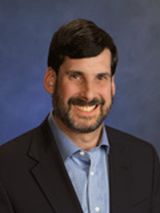By ANDY MYCHKOVSKY
As we near the end of the year, rather than reflect on fond memories of 2019 (for which I’m grateful for my family, friends, readers, and Twitter followers), I’ve already started thinking about 2020. If you ever wanted to get inside my brain for 5-10 minutes (scary proposition I know) related to healthcare startups and innovation, here are some areas or trends that I will be following in the new decade.
1. Medicare-For-All Will Be Everywhere
As we move closer to the Democratic Presidential caucus, some of the top-polling candidates (Sen. Elizabeth Warren, Sen. Bernie Sanders, Andrew Yang) are endorsing a Medicare-For-All (M4A) platform. If one of those candidates receive the nomination for the 2020 Presidential election, private v. public health insurance will be front and center. It will dominate all major news. I’m watching how the weight of the entire healthcare industry will politically respond to a national Medicare-4-All Presidential debate (both publicly and privately).
2. Updating Physician Anti-Trust Rules To Support Value-Based Care
In October, the U.S. Department of Health and Human Services (HHS) released their long-anticipated proposed rules to update the anti-kickback and physician referral regulations, to help spur greater provider participation in value-based care arrangements. Any changes once finalized would affect the Civil Monetary Penalties Law, the Federal Anti-Kickback Statute, and the Physician Self-Referral Law (“Stark Law”). After comments are received, I’m watching how the healthcare machine helps craft these new regulations that some would say, stifles innovation in provider care delivery.
3. One Medical’s Financials (from S-1)
This is dependent on One Medical, the technology-enabled primary care practice with 70+ locations in nine major U.S. cities, actually going public. However, CNBC reported the company has hired banks including JPMorgan and Morgan Stanley in preparation for an initial public offering (IPO). The company was formerly valued at $1.5 billion during a financing round in 2018 and could file its prospectus by as early as the first quarter of 2020. I’m watching to see how a primary care practice, traditionally low profit margin services business with moderate EBITDA multiples, is able to become financial viable with much smaller panel sizes, but a $199 membership fee, technology services, and higher patient engagement.
4. Softbank’s Vision Fund II
As I said repeatedly on this blog, I want more venture investment into healthcare startups that deliver measurable patient value. Therefore, if Masayoshi Son wants to put his $100+ billion behemoth investment fund (assuming he actually raises it) towards the $3.7 trillion American healthcare system, I’m all for it. Earlier this month, CNBC reported that Honor, the home healthcare startup, could receive up to $150 million in funding. I just hope that he also dabbles in rounds prior to Series C, because those are the companies I care less about helping (as they should already be on their way to becoming profitable). It’s the seed stage to series B that I believe needs further capital and VC competition to help push innovation. I’m watching to see if billions of dollars flow into the industry that most needs it.
5. The Year of Payer M&A
Besides UnitedHealthcare and Aetna/CVS, both too large to purchase, I’ve long wondered if large retailers would ever purchase a for-profit national payers (especially Molina or Centene/Wellcare). For example, Walmart has significant geographic overlap with the health insurance exchange and Medicaid managed care membership of either health plan. If you want to be in healthcare right now, doesn’t hurt to be closest to the premium dollar (unless Medicare-For-All happens…). CVS seems to have done well with the acquisition of Aetna and is pushing for a network of health hubs to deliver care. I’m watching to see if one of the major retailers who have dabbled in healthcare (Walmart, Kroger, Walgreens) actually becomes the actual health insurance company and drives membership into preferred facilities.
6. Startup Health Plan Enrollment for 2020
I’m rooting for any company trying to disrupt the traditional health insurance industry, because I value competition. Companies like Oscar, Bright Health, Devoted Health, Clover Health, and Alignment Health are all high-flyers in terms of venture funding. However, insurance is fundamentally a risk-pool game where the team with the largest membership should also have the lowest actuarial volatility. Sub-scale plans, especially those that require high marketing and broker administrative fees like in commercial or Medicare Advantage, do not survive without adequate membership. I’m watching to see if these startup plans can attract larger amounts of membership during the 2020 open enrollment process, and how that affects future investment in the space.
7. State Regulators, Doctors, Pharmacists, and Direct-To-Consumer Pharmacy Startups
Companies like Hims, Roman, Curology, Pill Club, Nurx, and Lemonaide have all capitalized on the rocket-ship trend in healthcare, the combination of e-commerce, subscription, and virtual visits. It has been reported that Hims reached $100 million in annual subscription revenue and could reach $250 million in reoccurring revenue by the end of 2020. For healthcare, that is unthinkable since it’s not just health insurance premium revenue. These companies are proving that patients will choose convenience and good marketing over having to go to a doctor in-person for treatment of a specific conditions with generic drug options. The concept of mail-order pharmacy is nothing new, however, this new wave has attracted criticism all across the provider community. I’m watching to see if any states begin to mandate in-person physician office visits before allowing prescription scripts to be ordered and how these well-funded startups will respond.
8. Whatever 23andme And GoodRx Are Up To
In my opinion, two of the most interesting startups to watch in healthcare. In general, I want to see how each diversifies their healthcare revenue and gains member traction across different verticals. How will 23andme expands their business portfolio away from one-off $199 (or $99 on-sale) DNA testing, as one of the front-runners in the genetic data mining world. Seeing competitors like Veritas Genetics struggle with the economics of sequencing the human genome must be taken into account. GoodRx is moving beyond offering savings on prescription drugs, and into GoodRx Care, a program that helps people access virtual visits with physicians. Cost for services start at $20, depending on the condition and I’m excited to see how it performs and if they also launch a DTC pharmacy product. I’m watching each of these companies and leaders because they are two of the better startups in the game.
9. Amazon
Amazon is like Oprah. It only needs one word at everyone agrees its important. In my opinion, no company is better at execution than the Seattle-based book company. And e-commerce company. And digital streaming company. And cloud computing, artificial intelligence leading company. And now, healthcare company. Amazon is the sleeping giant that appears to have awaken. With PillPack’s first deal with BCBS Massachusetts and the creation of Amazon Care, the healthcare service being offered to employees around Seattle, Jeff Bezos has made his first moves. I’m watching to see if they double down on the pharmacy or device distribution marketplace (watch out Cardinal, McKesson, and AmerisourceBergen), or call an audible and expand their healthcare services offering beyond just their employees and families.
10. Alphabet’s Future In Healthcare
I always suspected the the co-founders of Google, Sergey Brin and Larry Page, had a passion for helping improve healthcare. Never talked to them about it, but that was my hunch. Hence why an incredible amount of resources and talent was put into healthcare spin-offs like Calico, Verily, and Google Health. Now that Sundar Pichai has been named CEO of Alphabet and the most the valuable subsidiary, Google, he has a big challenge in responding to constant public challenges around privacy and breaking up “big tech”. I’m watching to see if Sundar takes his foot off healthcare in lieu of these obstacles or if he doubles down on the $3.7 trillion market.
11. Walmart Health Expansion or Marketing
The entire healthcare industry was shocked when Walmart announced their new health clinic in Dallas, GA. They were offering primary care, dental, counseling, labs, x-rays, audiology, and other services for much below “market” rates? Cost of an appointment varies from $59 to $99 without insurance, as well as accepting many of the largest health insurance plans. Is this going to be like the $4 generic drug list or a small pilot and brilliant marketing ploy? I’m watching to see how many more clinics are announced, where they’re located, and whether the economics of supporting a healthcare provider service at historically low rates will be financially viable.
Andy Mychkovsky is a Director at Evolent Health and the Founder of a healthcare startup and innovation blog, Healthcare Pizza. This post originally appeared on Healthcare Pizza here.
The post 11 Healthcare Innovation Trends To Watch In 2020 appeared first on The Health Care Blog.
from The Health Care Blog https://ift.tt/2ZEI16z






